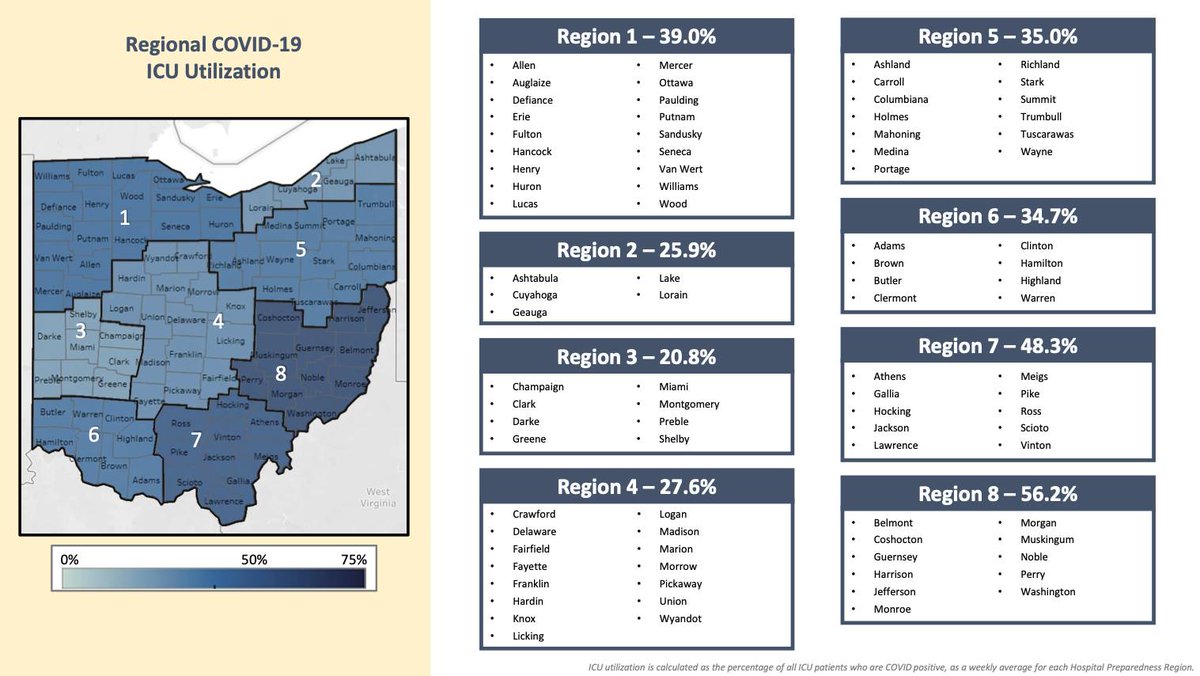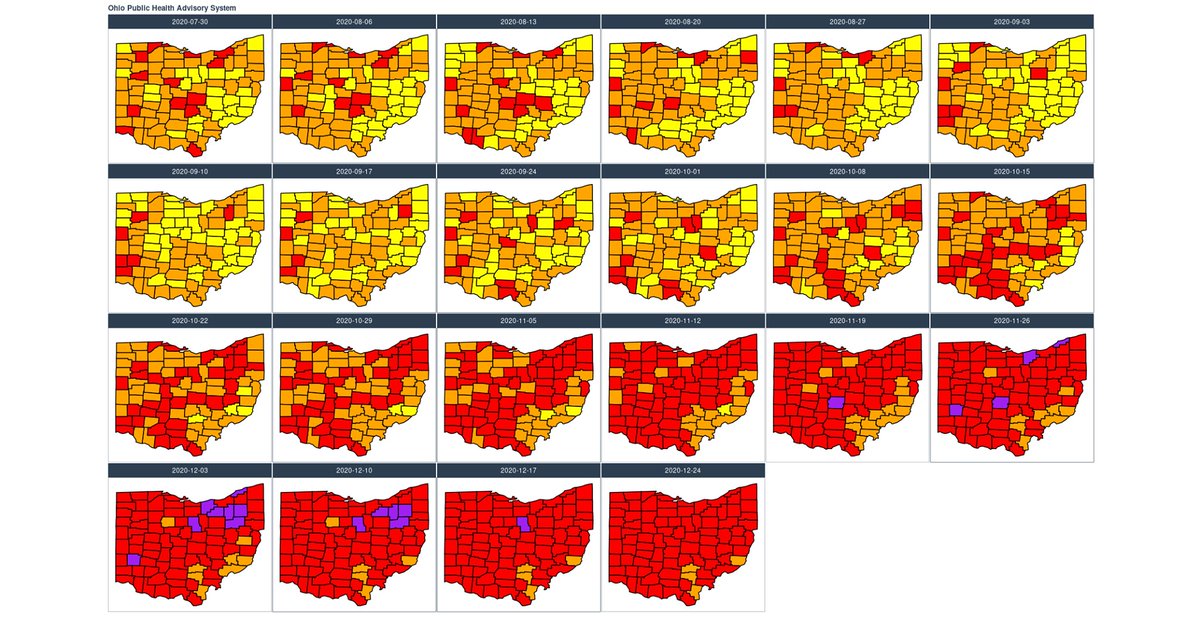
⭐️⭐️⭐️ Playing Number Games: Part Two
In my last post, I showed how the new 'Key Measures' ICU map was distorting the data by looking only at the comparison of COVID positive (not necessarily ill with COVID) patients versus -
In my last post, I showed how the new 'Key Measures' ICU map was distorting the data by looking only at the comparison of COVID positive (not necessarily ill with COVID) patients versus -
- vs the number of total patients in the ICU - not the percentage of COVD positive patients out of the total number of ICU beds.
So what if they went back to simply the percentage of COVID positive patients out of all available ICU beds? First, the numbers would not be as scary, and second, the total number of beds available in a region is not stable from one day to the next.
In fact, especially in region #4 (the region that includes Columbus), there is a massive fluctuation in number of total ICU beds.
I have attached a spreadsheet looking at the number of ICU beds for region 4 (data accessible at coronavirus.ohio.gov/.../key.../hos…).
I have attached a spreadsheet looking at the number of ICU beds for region 4 (data accessible at coronavirus.ohio.gov/.../key.../hos…).

Highlighted on 12/23 we can see that 220 beds were occupied by COVID positive patients out of a total of 1021 ICU beds, giving us a COVID positive percent of the whole of 21.55% .
Just 3 days later, the number of COVID+ ICU patients dropped to 203. But the total number of ICU beds dropped 119 down to 902. This means that although there were 17 fewer COVID positive patients in the ICU in region 4, the COVID positive percentage actually increased to 22.51%.
Again, these metrics are absolutely arbitrary and only serve to obscure the data.
#InThisTogetherOhio
#InThisTogetherOhio
• • •
Missing some Tweet in this thread? You can try to
force a refresh




